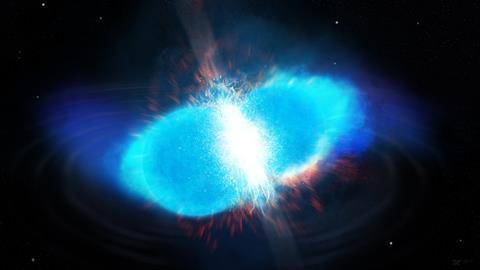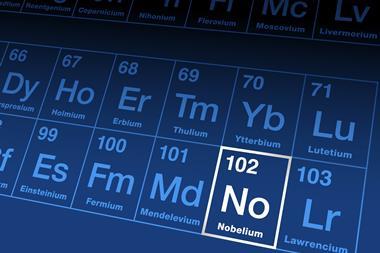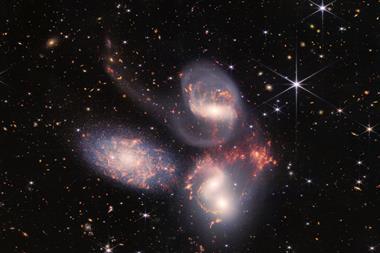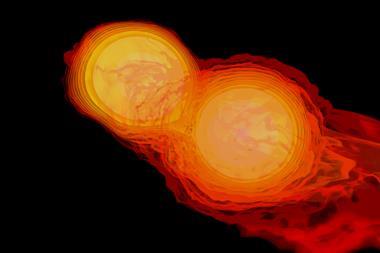Clear evidence of nuclei produced by fission has been discovered in the emission spectra of stars in the Milky Way. These fission fragments, which have been predicted by theoretical models but never previously observed, suggest that events like neutron star mergers and possibly some supernovae produce elements that are heavier than any of those previously seen in nature.
Elements heavier than bismuth-209 are all radioactive, so building them naturally requires rapid neutron bombardment at high energies, allowing nuclei to capture each neutron before they have decayed from the previous capture event. This procedure, known as the r -process, has been documented in neutron star mergers since an observation by the Laser Interferometer Gravitational Wave Observatory (Ligo) in 2017, and whether it occurs during other stellar events remains intensely debated.

Extremely rapid neutron bombardment should create heavy, fissile nuclei, and the fragments of these should be incorporated into new stars. The fission of these nuclei should produce fragments with a predictable mass ratio. Nuclear astrophysicists have therefore predicted that stars highly enriched in heavy nuclei – implying they formed from material that had experienced a very strong r -process – should be additionally enriched in specific elements including silver, palladium, platinum and osmium that represent the fission products of even heavier nuclei.
North Carolina State University astronomer Ian Roederer and an international group of colleagues studied 42 catalogued stellar spectra from the Milky Way. In particular, they analysed the relative intensities of absorption lines of nuclei with masses between 42 and 78 as well as those of europium-151 and europium-153. The team then compared the ratio of europium to iron (a common measure of how heavily enriched a star is in r -process elements) and found that, even when they subtracted out the direct enrichment that could be explained by the r -process, there was a strong enrichment in the specific spectral regions where fission fragments would be expected.
Roederer says that, although it seemed inevitable that fission fragments would be present, the quantitative measurement is invaluable, and it finally allows them to make an estimate of the highest masses that the r -process can produce. ‘It has to be at least 260 based on the masses that we’re finding,’ he notes. ‘Honestly, I would not have expected to find such strong signatures.’ Roederer explains that future work will aim to provide a clearer picture of the types of decay events that could have brought about the enrichment profiles that the team has uncovered.
‘Fission has been included in r -process calculations for many years, but it relied on theoretical calculations of fission barriers and fission fragment distributions and so on and so forth … it has never been this carefully compared with observational features,’ says theoretical astrophysicist Friedel Thielemann from the University of Basel in Switzerland. ‘In that sense, this is a very ambitious approach and a very careful approach.’ Though he admits the idea is ‘speculative’, Thielemann hopes that with improved observations, it may one day become possible to perform the reverse process – instead of needing to model high-energy, unstable nuclei to interpret astronomical observations, researchers might be able to use astronomical observations to constrain calculations of the unstable nuclei .
References
I U Roederer et al, Science, 2023, DOI: 10.1126/science.adf1341

















No comments yet